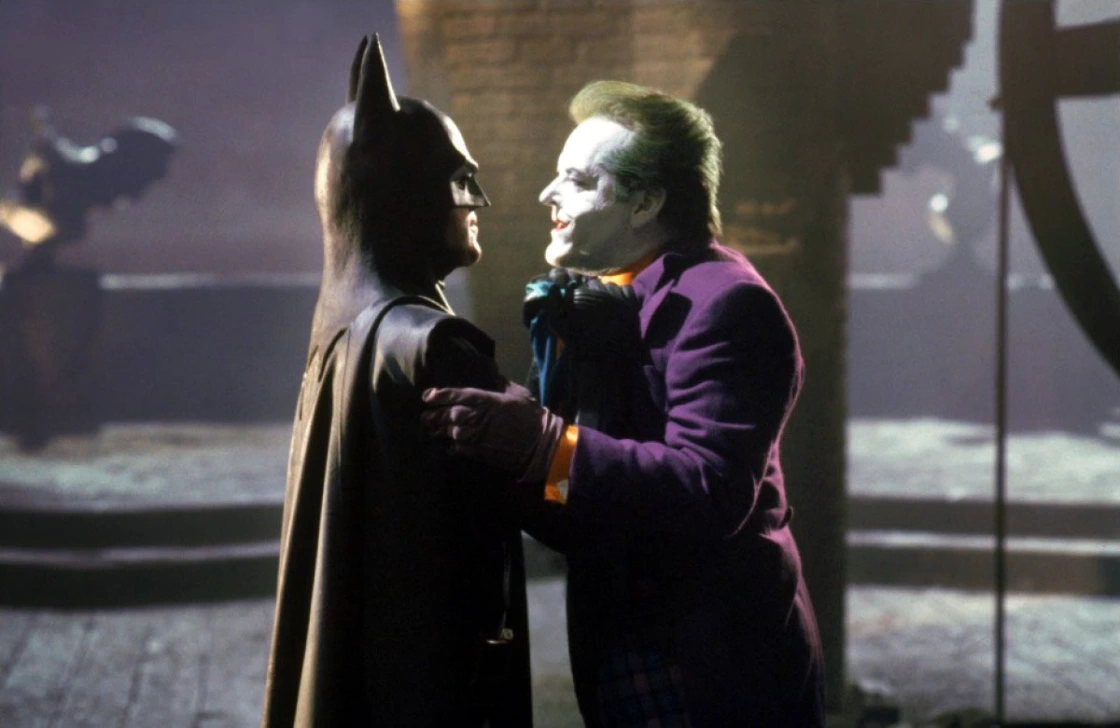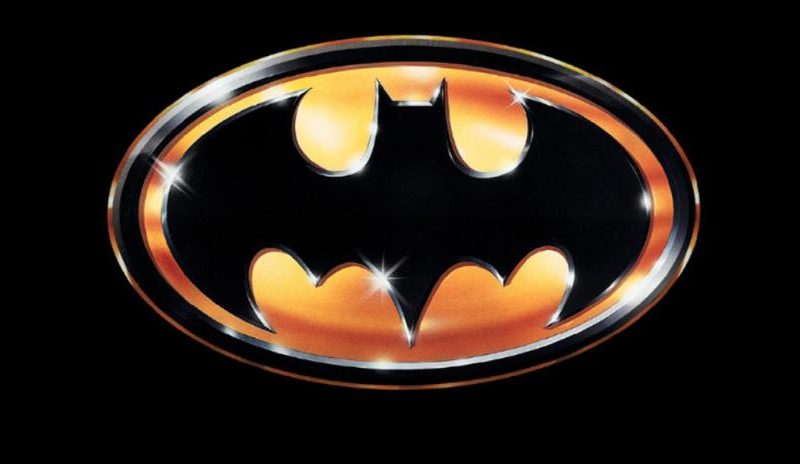Batman (1989).
To celebrate the 30th anniversary of Tim Burton’s groundbreaking superhero spectacle, we look back at its lasting influence on the industry and how well the film holds up in an era replete with comic book films.
Tim Burton changed things forever when he, at least partially, followed the tonal trajectory that the comic book industry had already begun to course and popularised it for a mass audience. Coming in the wake of famous books such as Watchmen (1985) and The Dark Knight Returns (1986), the aptly titled Batman is a brooding, morbid world filled with characters who resemble their hand-drawn counterparts mostly by name alone. Thirty years on, and its impact on the superhero genre has somewhat diminished, and the remaining traces of its influence apply to its effect on the blockbuster filmmaking business perhaps more so than its indisputable creativity. In 1989 it was a phenomenon like few others. Now its flaws perhaps stand out more so, and we can admire what it is and still accept that all of it doesn’t amount to a whole lot.
From the very first shot of Gotham City, there’s an otherworldly impression one gets from its grandiose design. A far cry from the sunlit metropolis of Superman’s home, this is a gothic, crime-infested dystopia, an aesthetic joy and the last place any of us would want to live. Its style brings to mind the famous German expressionist works of Fritz Lang’s 1927 opus Metropolis and Robert Wiene’s The Cabinet of Dr. Caligari (1920). Batman’s introduction is menacing, imposing, silhouetted against the night sky and lathered in moody grey clouds within an industrial, smog-infested alleyway. His appearance is somewhat belated – he arrives in the aftermath of an armed robbery performed by two thugs on a family that starkly resembles the Waynes. You’d be forgiven for mistaking it for the retelling of Bruce Wayne’s childhood trauma and, intentional though that undoubtedly is, I’m not sure it’s all that necessary. Still, the introduction of the Batman is a memorable one, so much so that Christopher Nolan pulled directly from it for his own iteration of the caped crusader’s arrival in 2005’s Batman Begins.
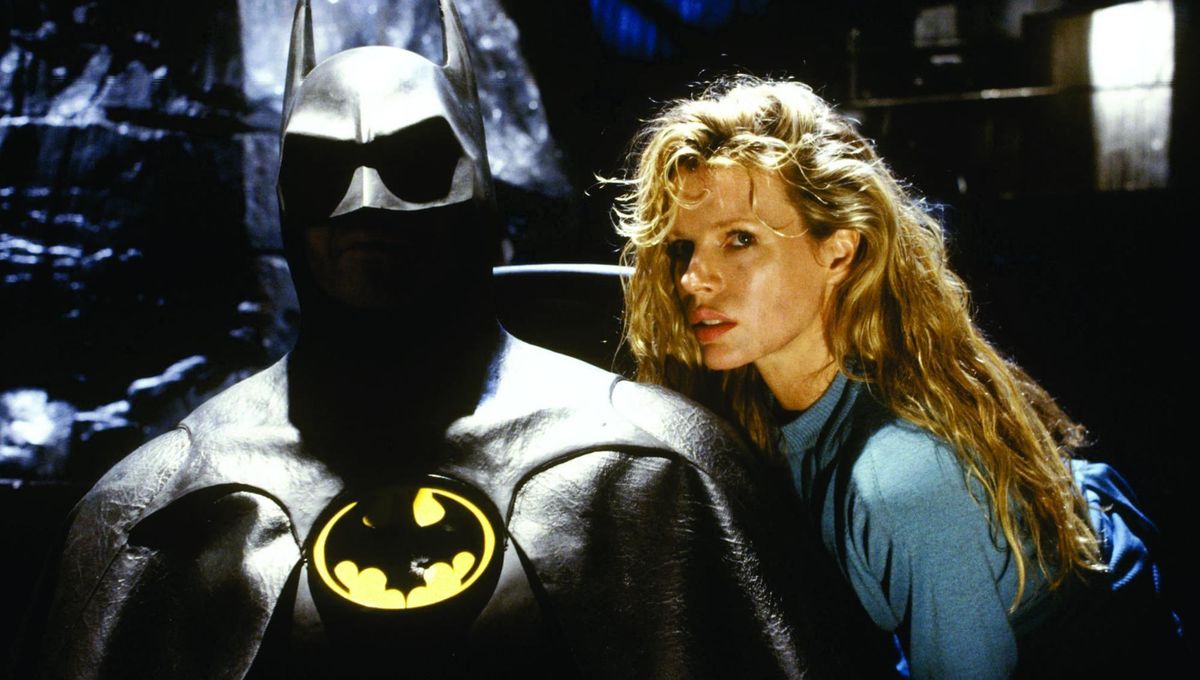
Bruce Wayne, brilliantly played by an at times, suitably unhinged Michael Keaton, is a little eccentric and socially awkward. The humour is usually dry, subtle. It’s as simple as Bruce following two people who are busily exploring his mansion making snide comments all the while, or Alfred Pennyworth (Michael Gough) following his master in the background and cleaning up after him. This is the more appropriate comedy that director Tim Burton applies to his visually bleak Batman tale, but there’s a level of camp that breaks the immersion of the whole thing, thankfully none of which is attributable to Keaton’s sterling central performance. The most indicative of this tonal misfire is of course the Joker’s Prince-driven dance routine in the museum, a sequence so unforgivably out of place so as to age the film exponentially with its presence alone. Jack Nicholson’s performance is reliably flawless, though his Joker is an odd one. He’s essentially a mobster, yet his actual birth as the infamous villain is pulled straight from Alan Moore’s famous Batman: The Killing Joke (a book Burton attests his love to, an anomaly in his otherwise absent knowledge of or care for comic books). When he kills his boss, his glee is absorbing. The string of events that led to that killing are less convincing – the animosity between the two is rushed, whittled down to a spat over a woman (a point that is, at least, ridiculed by the all-new, all-smiling Jack Napier).
Prince sequence aside, Danny Elfman’s score remains a seminal one in the annals of not just superhero films but film history itself. His score pairs perfectly with the dreamy Gotham of Burton’s imagination, and remains definitive of the character to this day. Much like how Burton’s visuals inspired the succeeding Batman: The Animated Series, Elfman’s score was influential to that equally as (or perhaps even more) iconic Batman adaptation. The film is a technical powerhouse, artfully pieced together and complete with quality performances. It’s also well-structured, effective at creating and concluding its conflicts and tying it all together by the close. The problems though lie with the direction and inconsistency of the story itself, and the decisions made in an attempt to heighten the drama instead only manage to wring the Batman mythos dry of its mystique.

It’s fascinating just how far the film deviates from the comic book identity of the characters and the world they inhabit. The relationship between Batman and the Joker is, on the surface, an honest representation of the famous rivalry pulled from the source material. The chemically-damaged origin given to the Joker is one that fans have generally accepted from the mind of Moore, and the battle between the two at the end of the film is fittingly epic. And yet, the conflict is manufactured in strange ways. The Joker gets a real name, a past life in which he himself is the murderer of the Waynes, and a love interest in Vicki Vale (Kim Basinger, replacing an injured Sean Young), whose affections he’s vying for with Bruce Wayne – the course of most key events essentially revolves around a love triangle. All of this, even in writing, makes for a jarring conflict of interest. It’s as much deadly serious as it is awkwardly comedic. This combination can work but I’m not sure it works that often here. The Joker’s is a unique, unhinged brand of humour, and writers Sam Hamm and Warren Skaaren prove that they know how to deliver it. But to appease producers, certain sequences exist solely to appeal to a younger audience. Effective though this might be (and certainly Warner Bros. profited comfortably on merchandising), it only harms the film. The Joker’s mannerisms, as performed by an expensive and unchained Nicholson, are as inconsistent as the film itself, but some of his dialogue will forever bring me joy (the righteous indignation with which he proclaims, “he stole my balloons!” still brings a smile to my face).
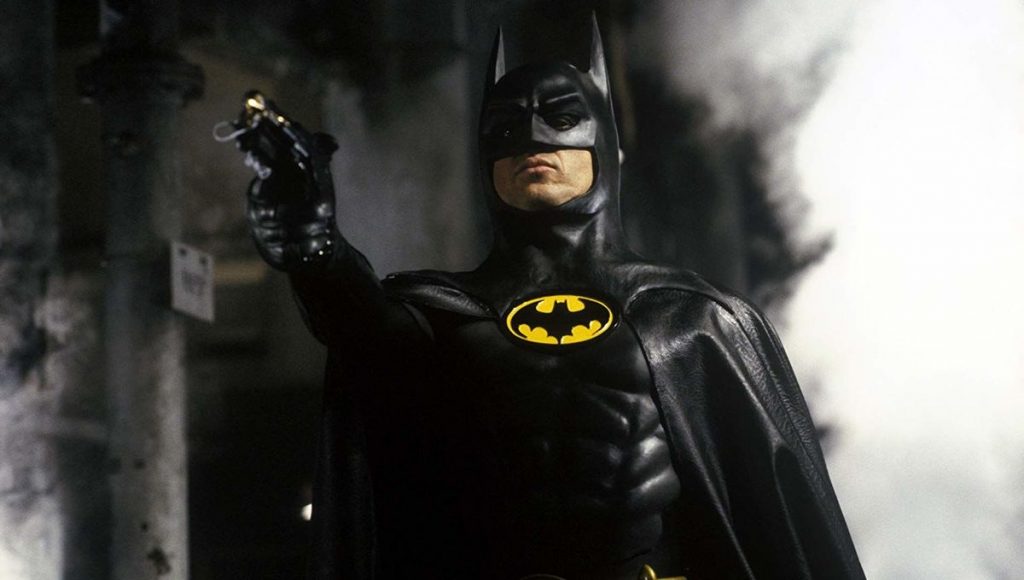
The reveal that Napier was the man who killed Bruce’s parents plays out as a key moment in the film, but not enough significance is given to Bruce’s grief or any innate desire to find the murderer for it to matter. A pre-maimed Joker being the catalyst for the Batman just as the Batman is at fault for Napier’s accident is thematically strong, even if it disregards the essence of their relationship. It’s fitting that Vale arrives to pull Bruce away from his moment of existential discovery – she exists solely to either create or stall the drama. Introduced as an intelligent and driven character, her hunt for proof of the Batman could be compelling. Instead, after just one night with Bruce, she’s reduced to an obsessed stalker pining for the tragically tormented hero. Still, the film’s climax itself works. The hero’s climb up the cathedral tower to rescue the girl nods to both Metropolis and, to a lesser extent, Hitchcock’s Vertigo. Dressed all in white, Vale’s purpose for being written into the film is clear – if only the script hadn’t promised something more for her.
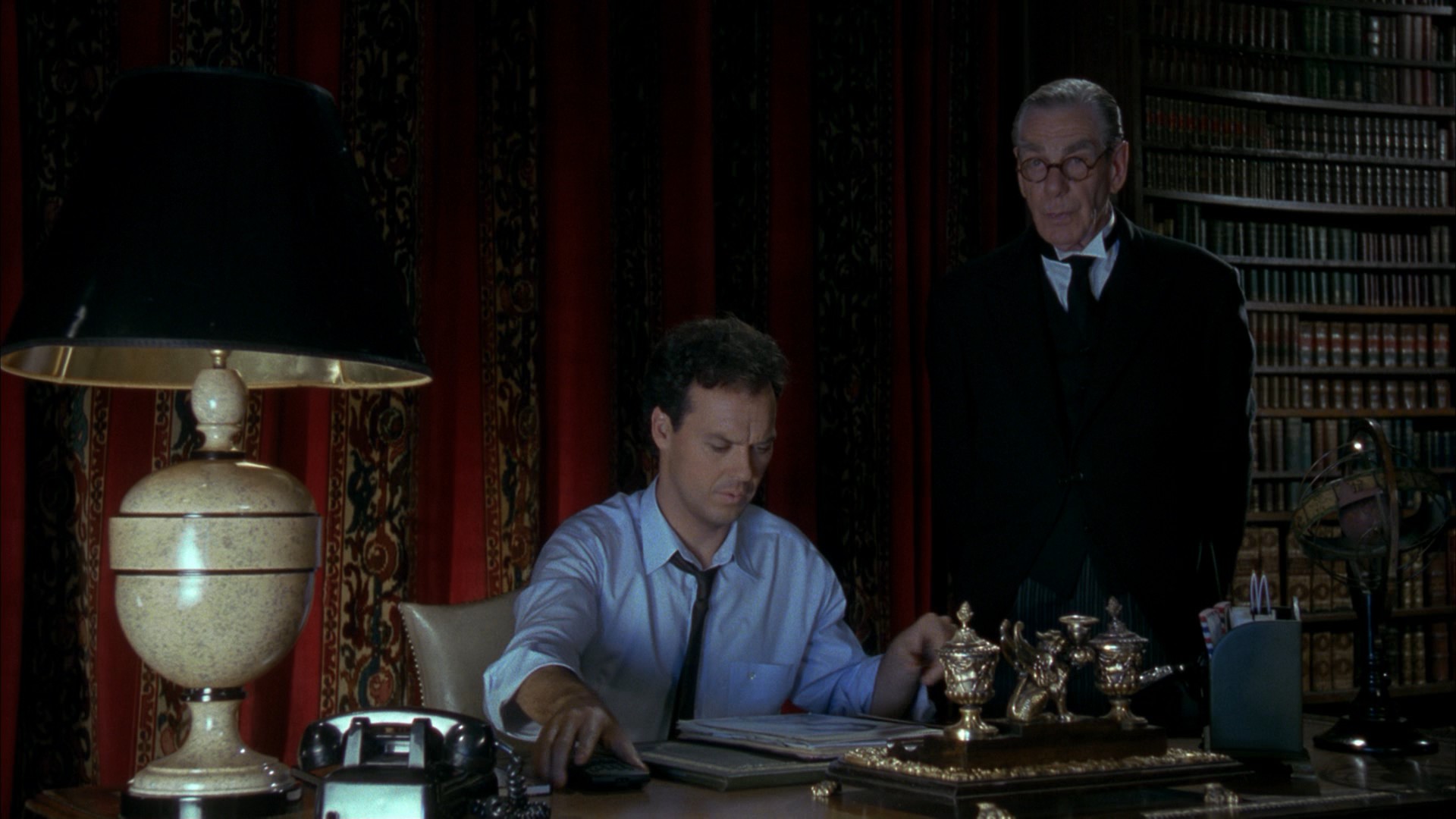
Much has been said in retrospect on the film’s enormous cultural impact both before and following its release. Keaton was of course subject to much scrutiny following his announcement in the role of Batman, but Warner Bros. marketed the film in pretty spectacular fashion so as to deem it a non-issue prior to its opening despite the 50,000 letters of protest sent to its offices (an action now replaced by the online petition). At the time it became the fifth highest grossing movie ever, and reached home video under six months after its release. The latter might be the high watermark of its legacy. It was, at the time, an unprecedented move to rush a film out to store shelves so soon, and has long since become common industry practice. Its production period was met with rampant intrusions by the press, the extent of which hadn’t been seen in Hollywood since the likes of 1963’s overblown epic, Cleopatra. The film owes much of itself to works from before its time while it visually and narratively has little ongoing effect on today’s landscape, it’s a milestone in publicity and cultural euphoria. A turning point, even.
For the numerous flaws in Burton’s Batman, its final shot of a Batman standing watch over his city with the Bat Signal lighting up the sky is still inspiring. The film boasts performances that are, despite the many, many superhero films that have come since, still talked about to this day. It’s impact on the industry rests mostly on it being a motivating product for change during the era of home video’s growing prominence. It’s also central to, one could say, the birth of fandom culture as we know it today. It marks the early days of what’s become a movie-going culture that hungers for more, and lives and breathes these cinematic legends. Regardless of its missteps, Batman remains a satisfying spectacle and a cultural touchstone. For those reasons, it is still relevant thirty years on.
Film ’89 Verdict – 7/10
